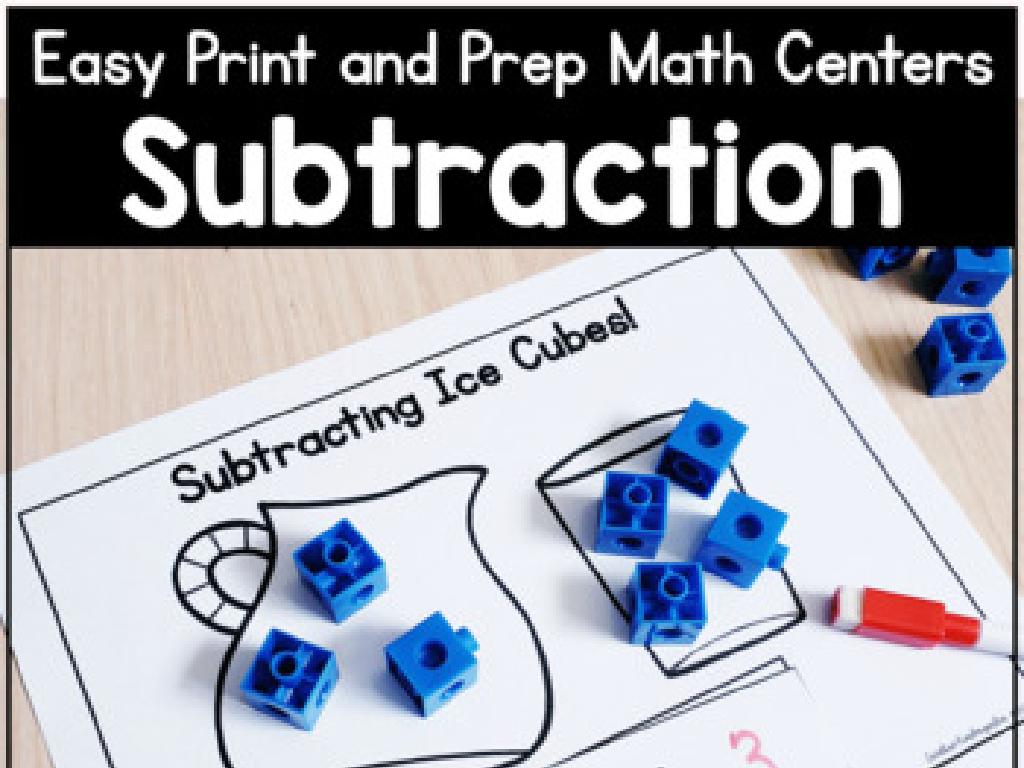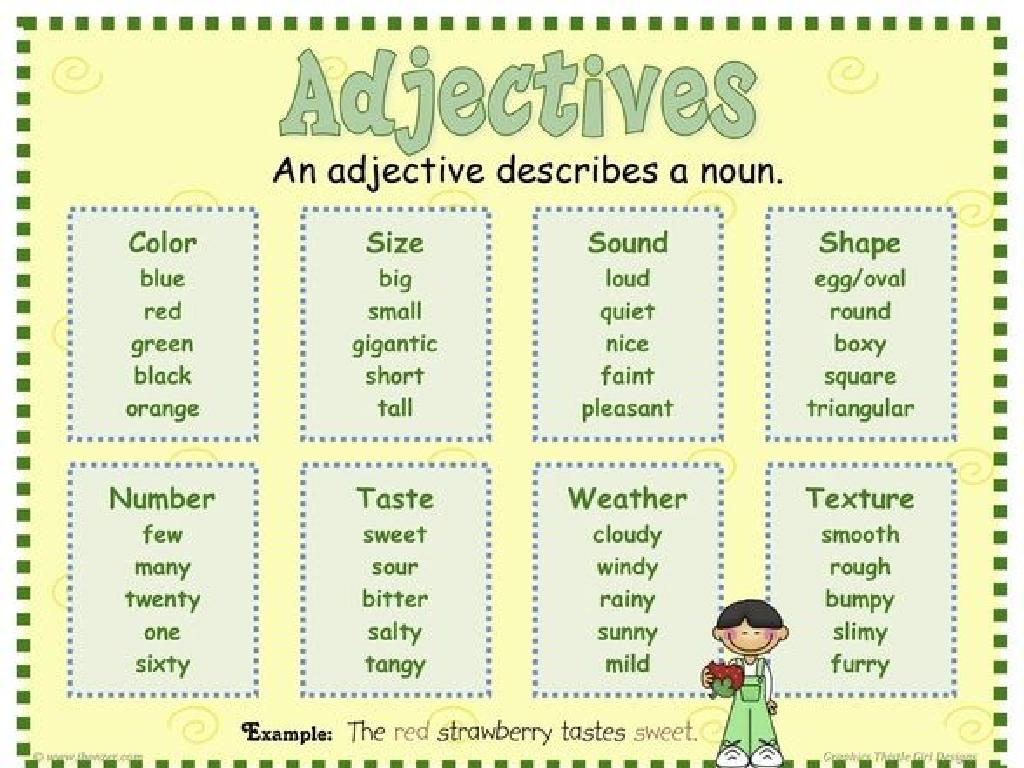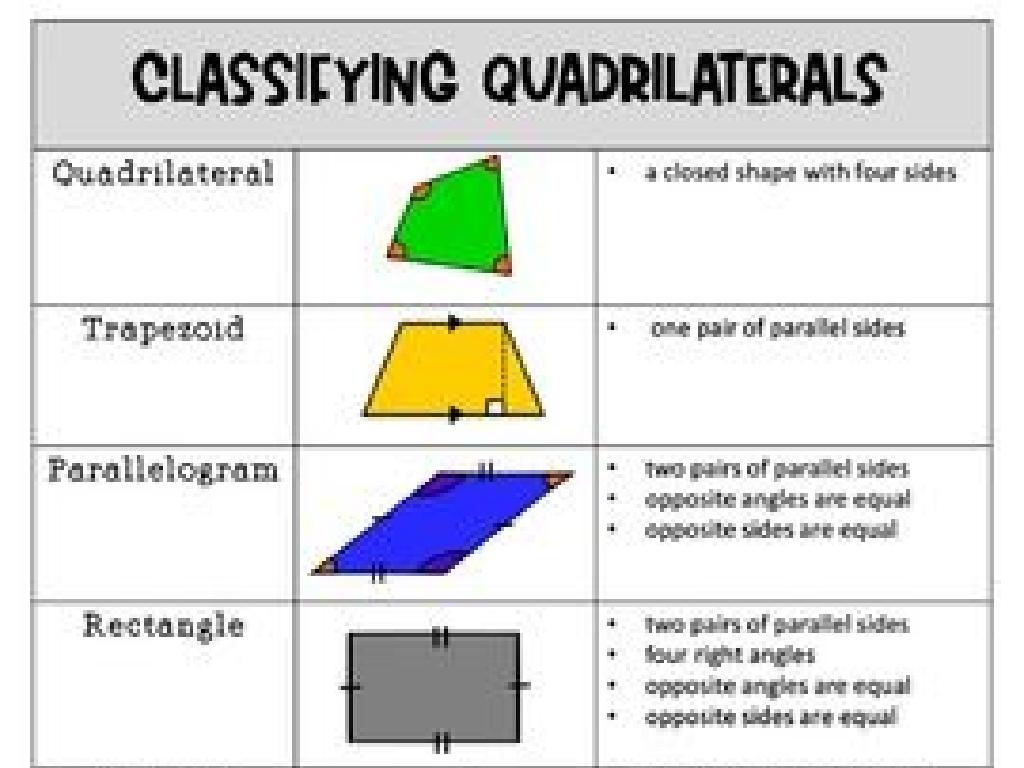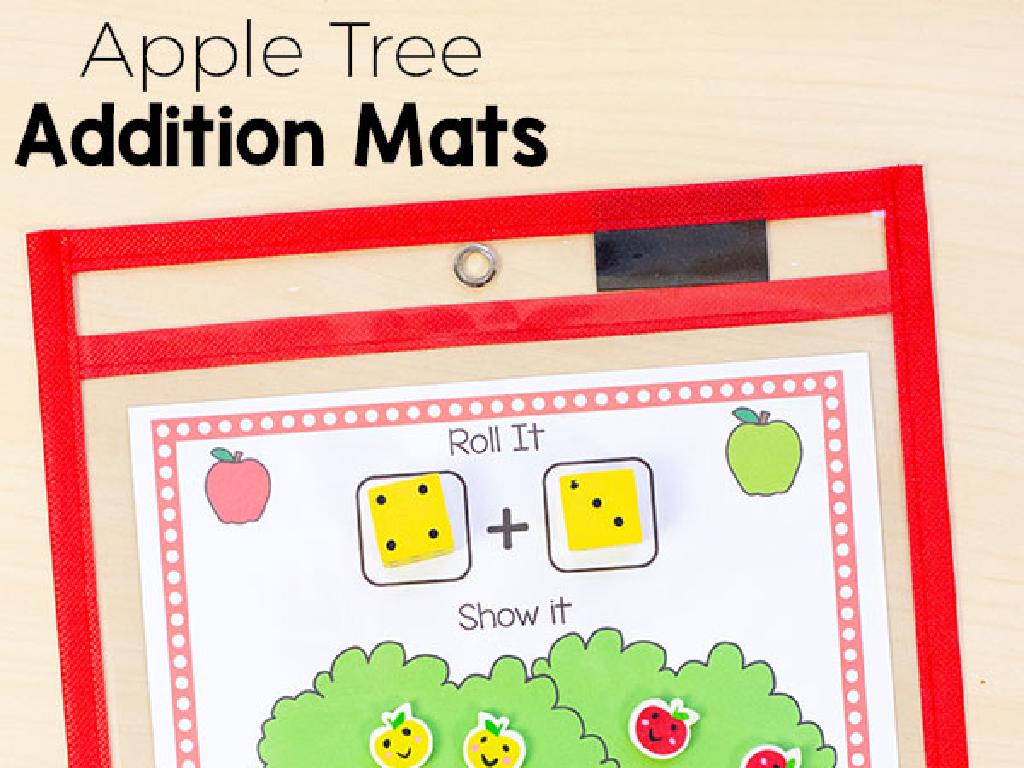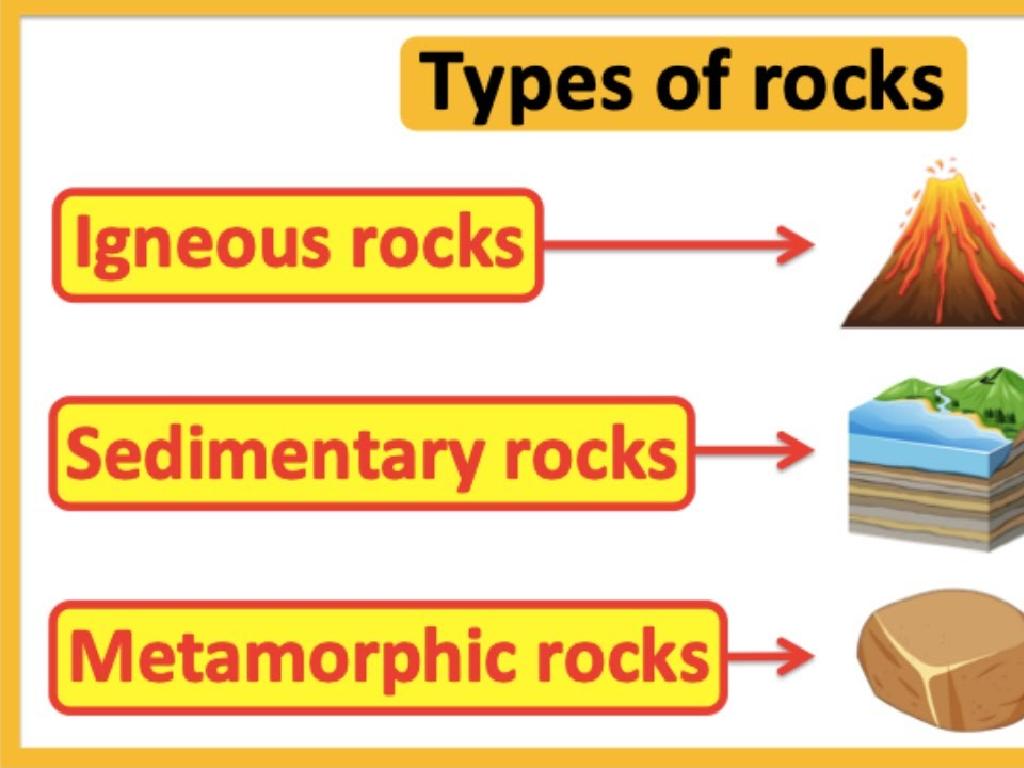Add Doubles
Subject: Math
Grade: First grade
Topic: Addition Strategies Up To 20
Please LOG IN to download the presentation. Access is available to registered users only.
View More Content
Welcome to Addition: Learning Add Doubles!
– Discovering ‘Add Doubles’
– ‘Add Doubles’ means adding the same number to itself
– ‘Add Doubles’ is fun and easy
– Like 2+2 or 4+4, it’s quick to calculate
– How ‘Add Doubles’ helps us
– It’s a shortcut for faster addition
– Practice ‘Add Doubles’ together
– We’ll try examples like 3+3 and 5+5
|
This slide introduces the concept of ‘Add Doubles’ to first graders as a part of learning addition strategies. Start by explaining that ‘Add Doubles’ is simply adding the same number to itself, which can be a fun and easy way to do addition. Emphasize how using ‘Add Doubles’ can speed up their addition skills, making math faster and more enjoyable. Engage the class with interactive examples and encourage them to come up with their own ‘Add Doubles’. Finish with practice problems to solidify their understanding, such as 3+3, 5+5, and so on, up to 10+10.
Learning to Add Doubles
– What are doubles in addition?
– Two identical numbers added together, like 1+1
– Examples of simple doubles
– Like 1+1=2, 2+2=4, and 3+3=6
– Counting doubles using objects
– Use toys or fingers to show 2+2 toys or 3+3 fingers
– Doubles help us add faster
|
This slide introduces the concept of doubles in addition, which is a foundational strategy for first graders learning to add numbers up to 20. Start by explaining that doubles are simply two of the same number added together. Provide clear examples using small numbers to ensure understanding. Encourage students to use tangible objects like blocks or fingers to visualize and count doubles, which reinforces the concept and aids in memorization. Highlight that knowing doubles can make adding larger numbers quicker and easier, as they serve as building blocks for more complex addition. During the class, engage students with hands-on activities where they can practice forming and adding doubles with various objects.
Adding Doubles with Visuals
– Visual example with apples
– Imagine 2 apples plus 2 more makes 4 apples
– Use fingers to add doubles
– Hold up 2 fingers on each hand, then count all fingers
– Let’s practice together
– We’ll add 1+1, 2+2, and 3+3 together
|
This slide is designed to help first graders understand the concept of adding doubles using visual aids and physical activities. Start by showing a visual example with apples to make the concept relatable. Then, encourage students to use their fingers to add doubles, which helps them visualize the addition process. Engage the class in a practice session where they can apply what they’ve learned by adding 1+1, 2+2, and 3+3 together. This interactive approach reinforces their understanding of addition and doubles. Make sure to walk around the classroom to assist any students who may need help and to ensure that everyone is participating and understanding the concept.
Doubles Song: Sing & Learn!
– Sing the Doubles Song
– Singing can make learning fun and memorable
– Remember doubles facts
– Helps us quickly recall addition of numbers like 1+1, 2+2, etc.
– Follow the movements
– Movements make it interactive and engaging
– Have fun learning math
|
This slide is designed to introduce the Doubles Song as a fun and interactive way to help first graders memorize their doubles facts in math. The song incorporates both auditory and kinesthetic learning styles to enhance memory retention. Encourage the students to sing along and perform the movements to help them engage with the material. This activity supports the development of quick recall skills which are essential for mastering basic addition strategies. Make sure to practice the song several times, and praise the students for their participation and effort.
Practice Time: Adding Doubles
– Complete the doubles worksheet
– Pair up for problem-solving
– Work together and help each other
– Class review of worksheet answers
– Discuss different strategies used
– Reinforce addition skills
|
This slide is designed to facilitate hands-on practice with adding doubles, an essential addition strategy for first graders. Provide students with a worksheet that includes a variety of ‘adding doubles’ problems. Encourage them to work in pairs to foster collaboration and peer learning. After completing the worksheet, bring the class together to review the answers, allowing students to share their strategies and thought processes. This will help reinforce their understanding of the concept and provide an opportunity for collective learning. As a teacher, be prepared to offer guidance and clarify any misconceptions during the class review. Additionally, consider creating a supportive environment where students feel comfortable sharing their answers, regardless of whether they are correct.
Doubles Game: Let’s Practice Adding!
– We’re playing a doubles game
– Roll dice to move forward
– Roll two dice and if they show the same number, that’s doubles!
– Land on doubles to advance
– When you roll doubles, add the numbers together to move
– Race to the finish line
– The first player to reach the end of the game board wins!
|
This interactive game is designed to help first graders practice and reinforce their understanding of doubles in addition. Set up a simple game board with spaces numbered from start to finish. Students will take turns rolling a pair of dice. If they roll doubles (the same number on both dice), they add the numbers together and move their game piece that many spaces. For example, if a student rolls two 3s, they move 6 spaces forward. This game not only makes learning fun but also provides a practical application of the concept of doubles. Encourage students to say their doubles out loud as they play to reinforce their learning. Prepare for variations in the game to keep all students engaged and to cater to different learning speeds.
Class Activity: Doubles Hunt
– Explore the classroom for doubles
– Find items that come in pairs
– Shoes, socks, gloves are good examples
– Discuss your findings with peers
– Share with the class what you found
|
This interactive activity is designed to help first graders recognize and understand the concept of ‘doubles’ in a fun and engaging way. Encourage the students to walk around the classroom and look for items that come in pairs, such as scissors (two blades), shoes (two in a pair), or eyes (two on a face). Once they find an item, they should discuss with their classmates why they think it’s a double. After the hunt, each student will have a chance to present their findings to the class, reinforcing their understanding of the concept. For the teacher: Prepare a list of possible doubles that students can find in the classroom. Be ready to guide them with hints if they are struggling to find items. Consider having stickers or small rewards for participation.
Celebrating Doubles!
– Congratulations on mastering doubles!
– Doubles make addition fast
– Adding the same number twice can be done quickly!
– Keep practicing with flashcards
– Use your flashcards to become a doubles expert
– Doubles are fun and helpful
|
Well done to all the students for learning about doubles in addition! Remember, knowing your doubles can really speed up your addition skills. Keep practicing at home with the doubles flashcards provided. This will help you to become more confident and quicker at adding numbers. Encourage the students to play games with their flashcards and to challenge themselves to remember as many doubles as they can. Reinforce the idea that math can be fun and that they are now equipped with a powerful tool to help them in their math journey.

